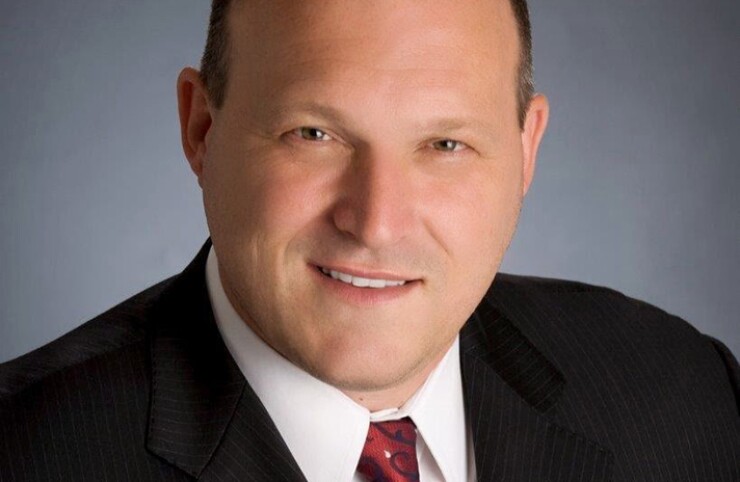How investors can lock in value at year end
7 min read

Municipal experts say buying attractively priced tax-exempt securities in the final weeks of 2023 could benefit portfolios well into 2024.
With only a few short weeks left until year end, investors still have time to lock in value and historically attractive yields in the municipal bond market, according to analysts.
Even with the latest rally, which saw yields fall up to 100 basis in November, the climate is ripe for investors looking to take advantage of what experts say is the most attractive market in over a decade.
“We have moved to attractive levels and we are taking advantage of that in a deliberate fashion,” Jeff MacDonald, head of fixed income strategies at Fiduciary Trust International said earlier this month.
“We are at yield levels not seen since the [global financial crisis],” he pointed out. “We recognize the attractiveness and are locking into the current market,” MacDonald added.
Municipals have been no exception to the change in valuations in the fourth quarter, agreed John Kemnitzer, vice president and municipal fixed income portfolio manager with Johnson Financial Group.
Yield rose dramatically earlier in the quarter and that helped buyers emerge, with some larger asset managers looking to begin extending duration, he noted.
In some cases, the municipal sector can provide taxable-equivalent yields on high-quality bonds in the 7% range, according to Kemnitzer.
“As a result, yield profiles are compelling within the sector especially when you adjust for tax-exemption,” Kemnitzer said, noting that the taxable-equivalent yields can provide equity-like returns in some cases.
Beside attractive yields, some other benefits of the current market include a firm tone currently and limited credit quality concerns, especially for investment grade municipals with elevated rainy day funds, according to Kenmitzer.
“Overall, it is a constructive credit environment for the muni sector,” he said, adding that security selection remains “paramount” in this type of environment.
“For so many years, investors had to reach for yield,” he continued. “Now that we are in a higher-rate environment there is no reason to do that,” Kemnitzer said, noting that high-quality bonds can be sourced at attractive yields. “The magnitude of the tax-adjusted yields is much more compelling within this higher-rate environment as well.”
While experts, including MacDonald, say yields are compelling, “they have made a strong move lower headed into year end with evidence of a slower economy and an expectation that the Fed is done hiking with a series of cuts on the way next year,” he said.
“We are building positions and extending, but we are not all in,” MacDonald said. “If rates continue to climb, we have dry powder and continue to build that yield.”
Calling municipals attractive on an after-tax basis for the highest tax-bracket investors based on comparison to current Treasury rates and corporate credit, he said the tax-exempt market continues to be on the “tighter side of history” relative to most taxable sectors of the market.
“In terms of fundamentals, we are fairly solid, only a bit weaker than the peak of last year,” MacDonald said.
The firm, he said, remains neutral in duration and focused on preparing portfolios for a lower-rate environment for the remainder of the year and into 2024.
MacDonald expects the yield curve to normalize in a lower-rate environment, as he believes the Fed is done hiking for the near term.
After strong growth in the third quarter drove a move higher in rates, investors have now begun to embrace the trend developing between lower growth, lower inflation, and a Fed that should be in a position to begin easing policy around mid-2024, according to MacDonald.
“We are positioning to lock in the current environment and lock in lower rates in 2024,” he said.
MacDonald is doing so in the final weeks of 2023 by adding slightly longer duration and longer maturities to preserve the income potential of client portfolios, but that strategy can be tricky especially given the yield curve inversion.
MacDonald is largely focusing on the seven- to 12-year range, what he calls the outer end of the intermediate slope of the curve, and avoiding the “super long” range.
He is extending to between 10- and 12 years, just beyond the 1 to 10 slope and inside the three- to 15-year market benchmarks.
When the front end got hit hard in the earlier part of the fourth quarter, it was challenging to sell paper in that segment of the yield curve to extend, especially when there was a lack of available cash, MacDonald noted.
Providing some relief from the inverted yield curve are sectors, like housing, which have been attractive, especially the triple-A rated, collateralized planned amortization class bonds, according to MacDonald.
The securities have recently offered yields north of about 4.25%, he noted.
“We are seeing value and building those positions over time,” he said, adding the housing paper is plentiful in supply and opportunity and their yields and spreads have moved wider.
MacDonald has been adding exposure to attractive Florida, Minnesota and Colorado housing securities, to name a few.
“Generally speaking we have had a lot of supply and a good chance to pick and choose” housing paper with quality collateral, good cash flow, and a PAC structure “that serve the portfolios well in the current rate volatility.”
They offer callability and return of principal based on the mortgage structures, as well as the support bonds that back those mortgages, according to MacDonald.
Due to the choppy volatility he observed in the early fourth quarter, the PAC structure offers certainty of duration among its key attributes.
A bias upward in credit quality is a strategy employed by MacDonald, who said the current market is lacking proper compensation for lower-rated credits.
“We think lower-quality spreads are on the tighter side and investors are demanding more compensation for taking on credit risk,” he said.
“Spreads should be wider and we would look for opportunities as we move to weaker fundamentals,” MacDonald said. “We would expect to demand higher compensation and higher yields to get involved,” and there is a greater likelihood for that to occur in 2024, according to MacDonald.
Neither the bad performance in the third quarter or the rally in the fourth quarter should impact investor strategies ahead of or going into 2024, according to Roberto Roffo, managing director and portfolio manager at SWBC Investment Company.

“The recent rally was overdue considering the drastic rise in rates and the terrible performance of municipal bonds during the third quarter,” Roffo said at the end of November.
“I don’t believe the recent rally will affect strategy for next year as investors will probably use any volatility to buy bonds they may have missed during the rally,” he added.
With the current economic indicators coming in slightly weaker and more investors coming to the consensus that the economy will slow further next year, Roffo said investors will probably focus on adding duration to their portfolios while still taking advantage of the relatively flat municipal yield curve.
Others, meanwhile, agreed that 2023 still has a bargain or two up its sleeve for mom and pop investors.
“With respect to the balance of the fourth quarter we are expecting retail to still have an interest in current yield levels, as well as taking advantage of any tax loss harvesting opportunities that may be available before year end,” Bill Walsh, president of Hennion & Walsh Inc. said.
“Recent Fed meeting minutes and commentary seemed to have calmed some concerns that the Fed will raise rates again this year, giving many retail investors the confidence to position their investment-grade muni bond portfolios for the long term,” he added.
Overall, investors should “embrace the opportunity” to take advantage of the current attractiveness in the municipal market and fixed income asset class more broadly in spite of the strong move lower in yields headed into year end, according to MacDonald.
However, investors should posture their portfolios for year end by checking if they can harvest tax loss swaps; remain up in credit quality; and preempting the lower rates expected in 2024 by grabbing the value in the current market before the New Year.
“A year or two from now investors are going to be happy they locked in some of this yield for years to come,” MacDonald said.
While many investors are” grappling” with how high yields may go, they remain focused on the macro uncertainties and want to see some stabilization before deploying capital on the long end,Kenmitzer said.
While there is a possibility rates could continue to drift higher, Kenmitzer suggests “it may make sense to lock in rates soon for those able to digest the repricing of assets in the near term.”
“Longer term, that could support a rewarding portfolio looking out six months to three years, or even longer,” Kenmitzer said.







